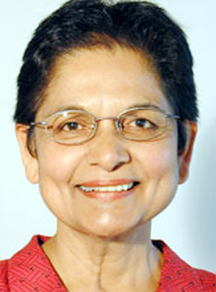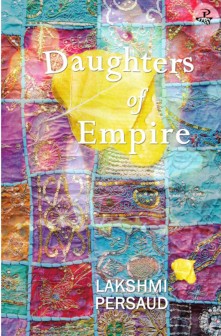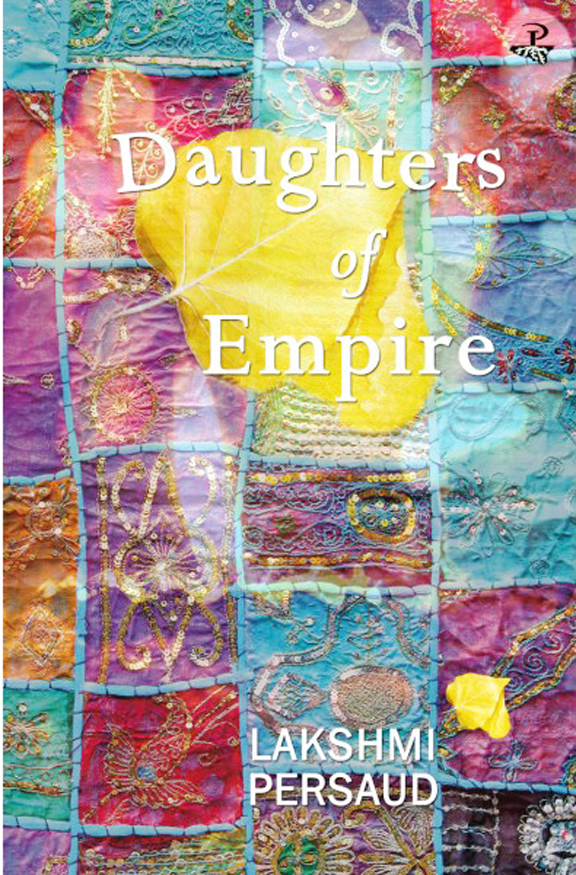By Lisa Outar
Born in Port Mourant, Guyana and living in the US since 1985, Dr. Lisa Outar has a B.A. from Princeton University and an M.A. and a Ph.D. from the University of Chicago. She teaches at St. John’s University in the fields of Postcolonial Literature and Anglophone and Francophone Caribbean writing. Her research and writing focuses in particular on Indianness in the Caribbean and its diasporas.


effect, one who stayed and one who left, to show the loosening of ties that departure brings, with indicators such as the strained conversations over telephones and letters pregnant with unspoken worries and concerns that must be carefully deciphered. But she also uses this device to demonstrate the truth that all migrants know, which is that we carry the past with us. Translation across spaces as Salman Rushdie reminds us creates a brokenness, but also allows us a special kind of vision. As Rushdie argues in Imaginary Homelands, the Indian writer who writes outside of India (and in this case the Caribbean) “is obliged to deal in broken mirrors, some of whose fragments have been irretrievably lost.” Rushdie’s further argument that “The broken glass is not merely a mirror of nostalgia” but also “a useful tool with which to work in the present” is relevant here. In this instance, Trinidad is not represented by mere nostalgia or exilic longing, but in its rich complexity via the sister who stayed behind and the perspective of the immigrant daughters who move between London and Trinidad. The fact that the novel ends in Trinidad reminds us that this is no simple narrative of assimilation, but one where home and away are intricately intertwined in the complex way in which so many of us experience and in which transnational identities tend to emerge.

It is important to note however that the novel is insistent on revealing another dimension of the diasporic experience that gets glossed far over too often, which is the extent to which there are different costs for women who migrate than for men. The isolation, self-denial and loss of community that movement to a new country incurs are never far from the mind of Amira. Through this character, we find an insistence on the value and importance of domestic work and child raising (in the novel we find Amira embracing every connotation of that term “raising a child” especially when it comes to elevating knowledge, self-respect and class), but also a recognition of what women have to give up to make this happen. The daughter, Anjali’s, balancing work and three sons at the end of the novel is a reminder of the mother’s own unrealized hopes for herself which continue to plague her in the last chapter. The fact that she sees this daughter as most like herself is suggestive of the continued pain of the less fulfilling path that she had to follow.
The weight of cultural expectations on immigrant women both from the immigrant group itself and from the society at large is one that Monica Ali and US writers like Bharati Mukherjee challenge, but the character of Amira does not refuse that burden, but takes it seriously as part of her duty to her family, her culture and her dignity. Amira is no stereotype of the dutiful housewife however. We note that she celebrates the life of the mind, measuring success not merely by status and economic achievement, but by learnedness and interior depth.
Above all, the novel revels in the power of words, of educated discourse to allow for connection across differences, to stymie stereotypes, to chip away at scales of ignorance and to allow for true dialogue. That faith can appear too optimistic at times, too eager to believe that most forms of racism and cultural resistance can be overcome through dialogue, but the endeavor nonetheless is a noble one as are the noble minds that Persaud offers us in the forms of Amira and her daughters. Noble representations of men are available here too. The novel offers models for supportive male friends and husbands, open-minded and nurturing even when faced with the aftermath of rape. Persaud’s attempt at representing the inner workings of a marriage is laudable and while it includes debilitating circumstances like adultery, we are persuaded to keep faith in the partnership that marriage constitutes. The novel’s commitment to this is clear since by the end all three daughters as well as Amira and Santosh are firmly ensconced in marital bonds.
Overall, Daughters of Empire urges the belief that the bonds of family can bear us up in the worst of times and help us to soar to the best of our potential whether at home or in the diaspora. The novel is not shy about depicting the airs and disdain that can ensue from time away from one’s homeland and reminds us of the importance of humility in the face of one’s origins and good fortune even while accepting the radical transformation that movement provokes. The narrative’s movement between the space of the Caribbean and the UK and the retained perspective of those not of the middle classes in Trinidad, especially in regards to the girls when they return to the Caribbean, offer a model for a version of diasporic identity that is not exilic, not nostalgic, not assimilative, but is keenly attuned to the continuities and contradictions between spaces of home and away and negotiates an ever careful path to personal fulfillment in the context of cultural self-awareness.
Persaud’s work in general has asked us to think hard about the intersections of gender, ethnicity, and class and the tensions between community and individual desires and aspirations. This novel is no exception. The questions raised here are not easy ones to answer: how much of the past do we keep with us in our journeys of transformation in new diasporic spaces? What makes one a good parent? What sort of balance should one strike between self-sacrifice and preserving autonomy in the quest for a stable family life? What makes a successful marriage? Persaud provides one family’s successful path through these minefields, but in producing this novel she also gets us thinking about the Caribbean diaspora in general, about the factors that can produce radically divergent migration experiences: race, generation, place of origin, place of settlement, language, education, class, sexual identity. This family’s experiences, so carefully and thoughtfully represented, provokes thought about the experiences of others (both similar and radically different) and that I suspect will produce the keen interest with which readers will approach this chapter of Persaud’s work and wrestle with the weighty questions it raises.

